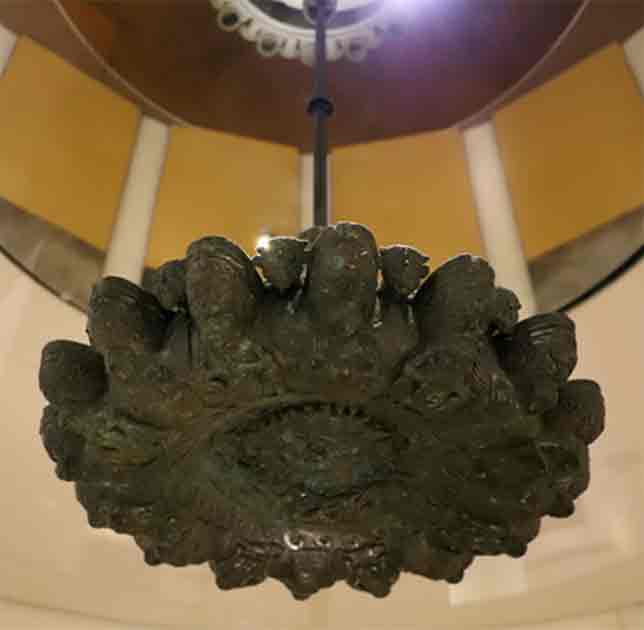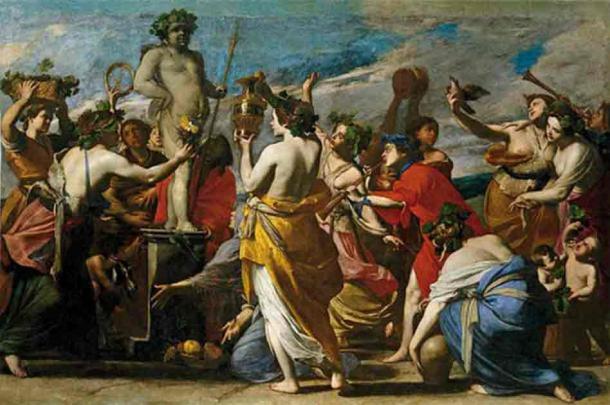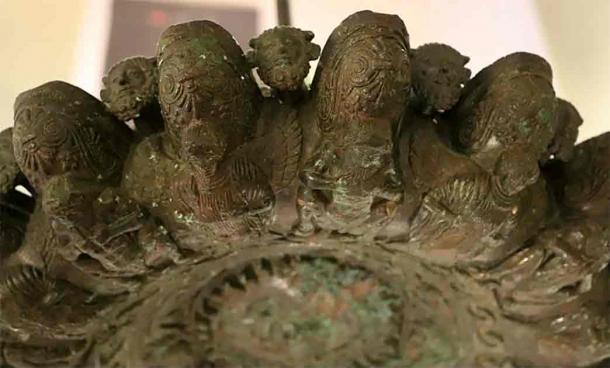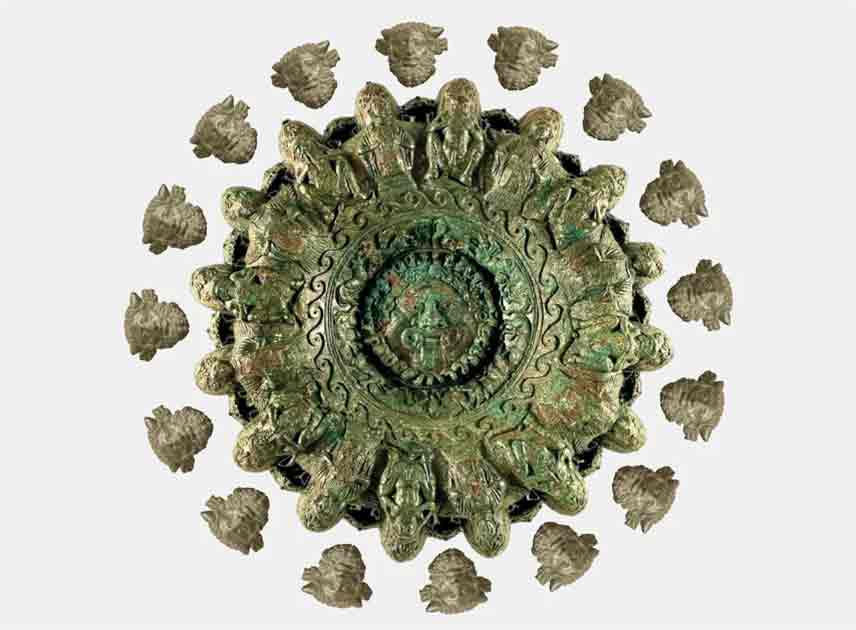Bronze Lamp Revealed as Dionysus Cult Object in Cortona Italy
An interesting new study has challenged the previous estimations surrounding a beautiful bronze lamp unearthed in a ditch near Cortona, central Italy. Using literary sources and iconographic evidence, the researchers have delved into the lamp’s origins and symbolism. This bronze lamp, discovered in 1840, has been the subject of debate due to its age and intricate decorations. Weighing nearly 60kg (132.27) and measuring 60cm (23.62 in) across, it hails from the ancient Etruscan civilization of Archaic Etruria, encompassing present-day Tuscany and part of Umbria.
- The Thracian Oracle: Has the Famous Sanctuary of Dionysus Been Found?
- Rare "Grotesque" Half-Lamp Discovered on Jerusalem’s Holiest Road
The Rarity of This Lamp: Uncovering the Cult
The lamp has confounded scholars for two primary reasons - firstly, its rarity in Etruscan and Ancient Greek art makes comparisons scarce, hindering a deeper understanding; and secondly, lacking contextual clues beyond an inscribed bronze plaque of later origin, its purpose remains elusive. The new study by PhD student Ronak Alburz and Associate Professor Gijs Willem Tol of the University of Melbourne, Australia has been published in Etruscan and Italic Studies, aims to solve these problems.
- The Ancient Mystery of the Ever-Burning Lamps
- Do not Underestimate the Etruscans: Art and Culture of their Own

The Etruscan lamp of Cortona. (Museo dell'Accademia Etrusca e della città di Cortona/DeGruyter, edited by R. Alburz)
Alburz and Tol's investigation suggests an earlier date for the lamp, around 480 BC, overturning previous assumptions. Contrary to earlier identifications, they propose that the lamp portrays Dionysus, the god of wine, pleasure, and revelry. Drawing from various sources, they argue that the lamp likely depicts the Dionysian thiasus, Dionysus' ecstatic entourage.
Alburz speculates that the lamp may have played a role in the Dionysian mystery cult, perhaps used in rituals or celebrations honoring the deity. This reinterpretation offers fresh insights into ancient religious practices, enriching our understanding of this captivating artifact from Archaic Etruria.
“The lamp was probably an object associated with the mystery cult of Dionysus. Its decoration represents the Dionysian thiasus, perhaps engaged in a cultic performance in the cosmos of the mysteries in celebration of Dionysus,” explained lead author Alburz in a press release.

The Dionysia festivals honored the god of the god of wine, pleasure, and revelry. (Public Domain)
The absence of contextual information regarding the building or associated artifacts has posed challenges for scholars, limiting their analysis to the individual decorative elements adorning the lamp.
They have contested the prior identification of the lamp's 16 bull-horned figures as the Greek river god Acheloos. Drawing upon a diverse array of literary sources and newly presented iconographic evidence, they assert that these figures actually represent Dionysus, the ancient Greek deity associated with wine and pleasure.
It is noted that Dionysus was commonly depicted with bull features. Consequently, the authors propose that the lamp portrays Dionysus' entourage, often depicted as intoxicated revelers.
Etruscans: Archaic Erturia and a World Gone By
The lamp originates from the ancient Etruscan civilization, which thrived in Archaic Etruria, encompassing present-day Tuscany and parts of Umbria. This civilization, spanning from 900 BC to 27 BC, was organized into three confederacies of cities: Etruria (encompassing Tuscany, Latium, and Umbria), the Po Valley with the eastern Alps, and Campania.
As the Roman Republic expanded, the Etruscan civilization gradually became absorbed into it during the late 4th century BC, following the Roman–Etruscan Wars, reports The Heritage Daily.
Due to the rarity of similar objects, known as "comparanda," in Etruscan or Ancient Greek art, drawing comparisons to provide context or interpretation proves challenging. This scarcity impedes the ability to establish meaningful parallels that could aid in understanding the significance of the lamp's design and symbolism.

Details of the Etruscan bronze lamp of Cortona. (Sailko/CC BY-SA 4.0)
Etruscan lamp making was an essential craft within their society, providing illumination for both practical and ritualistic purposes. While examples of Etruscan lamps are not as abundant as other forms of Etruscan art, archaeologists have uncovered various types of lamps crafted by the Etruscans.
Bronze lamps were among the most common types of lamps produced by the Etruscans. These lamps typically featured a shallow bowl for holding oil, a central nozzle for the wick, and a handle for carrying or hanging. Decorative motifs, such as geometric patterns or mythological scenes, were often engraved or embossed onto the surface of the lamp.
Top image: The underside of the Etruscan lamp of Cortona. Source: Museo dell'Accademia Etrusca e della città di Cortona/DeGruyter, edited by R. Alburz
By Sahir Pandey
References
Alburz, R., Willem Tol, G. 2024. A Re-Evaluation of the Iconography of the Etruscan Bronze Lamp of Cortona, Etruscan and Italic Studies. Available at: https://DOI: 10.1515/etst-2023-0019.
Carvajal, G. 2024. An Etruscan Bronze Lamp Found in Cortona is an Object of Worship Associated with the Mysteries of Dionysus. Available at: https://www.labrujulaverde.com/en/2024/04/an-etruscan-bronze-lamp-found-in-cortona-is-an-object-of-worship-associated-with-the-mysteries-of-dionysus/.
Milligan, M. 2024. Bronze lamp revealed as cult object associated with Dionysus. Available at: https://www.heritagedaily.com/2024/04/bronze-lamp-revealed-as-cult-object-associated-with-dionysus/151409.
Norman, M. 2024. Etruscan Lamp Depicts Greek God Dionysus, New Study Finds. Available at: https://greekreporter.com/2024/04/10/etruscan-lamp-depicts-greek-god-dionysus-new-study-finds/.

















